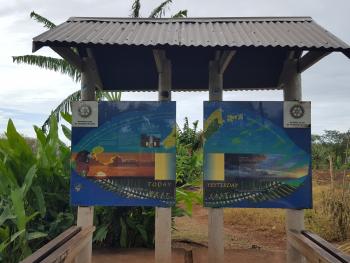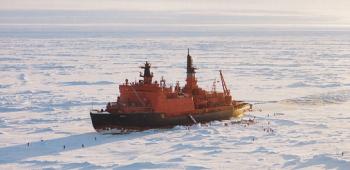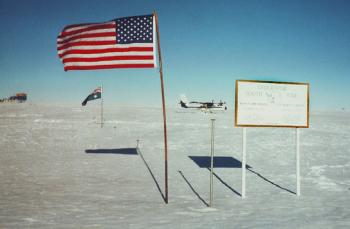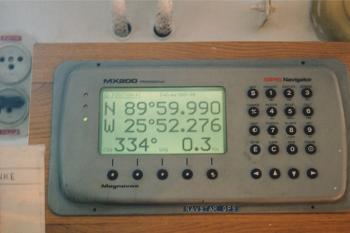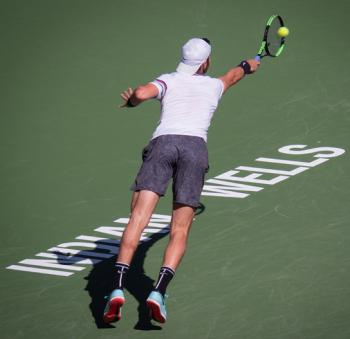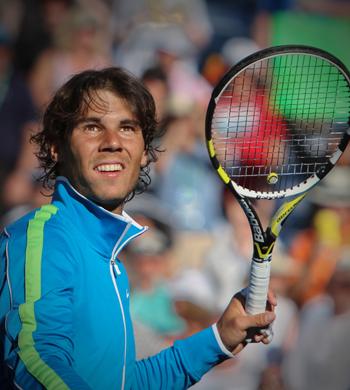‘Experience’ collections
Patrica McKevlin of Charleston, South Carolina, wrote, “In 2018 I finished viewing all of Johannes Vermeer’s paintings, which I was introduced to in the sixth or seventh grade! It was a difficult challenge, but I had wanted to do it for a very long time. I know some travelers who are counting countries, while others are aiming to visit all the capitals of Europe. I would like to hear what types of experiences other people are ‘collecting’.”
Another ITN subscriber (from Iowa) wrote, “On my next trip to India, among other things, I will ‘get’ my 26th and 27th of the 27 principal hill stations of British India [from the Dane Kennedy list] for my ‘collection.’ I know people who ‘collect’ wineries or visits with different tribal cultural groups, and I’ve crossed paths with people focused on narrow-gauge railroads or golf courses. I’m wondering what other experiences travelers ‘collect’.”
Consequently, we asked ITN subscribers to each write in about any particular type of experience that they seek out, “collect” or hope to complete as a goal. The responses below comprise part four in the series.
I’m very fortunate to live in St. Louis, which has one of the best zoos in the US. I love animals and learn something new every time I visit a different zoo. The following are a few of the zoos that I’ve enjoyed on my foreign travels.
• I visited the Colchester Zoo (www.colchester-zoo.com) in Colchester, ENGLAND, more than 15 years ago. I will never forget my experience feeding the elephants. Visitors take a handful of salad and launch the food toward the waiting elephant’s mouth. My first handful of food didn’t make it to the elephant, but the second handful was a success!
Today, public elephant feedings are scheduled at 12:45 p.m. and 2:00 p.m. daily. [At press time, the zoo was temporarily closed due to the pandemic. — Editor]
• Tiergarten Nürnberg (www.tiergarten.nuernberg.de) in Nuremberg, GERMANY, is another terrific European zoo. I visited in December 2007 when I was planning a safari to South Africa, and I was fascinated by the variety of African animals.
• In December 2017, I visited the Family Park & Zoo (www.mu.is/en) in Reykjavik. This small zoo features a variety of ICELANDIC farm animals, including some of the largest pigs I’ve ever seen.
• The two most beautiful zoos I’ve visited are the Auckland Zoo (www.aucklandzoo.co.nz), in NEW ZEALAND, and the ARTIS Amsterdam Royal Zoo (www.artis.nl/en), in the NETHERLANDS. Both zoos have lush vegetation that would stand out in any botanical garden.
I visited the Auckland Zoo in July 2009 and enjoyed the noon elephant walk, where the elephants stroll around the zoo with their keepers. I visited ARTIS in May 2019. It has an extensive collection of birds and a 2-story aquarium.
Hopefully, this list will inspire others to visit the unique and interesting zoos around the world.
Diane Harrison
Chesterfield, MO
In trying to formulate an eloquent description of this collection, the best I’ve been able to do is Significant Points and Lines of Latitude and Longitude. Of course, “significant” is subjective.
To me, the most significant point was 90 degrees south, the Geographic South Pole. This was of interest to me because of my interest in Antarctic explorers. This was also the most challenging destination for me to reach. I got there in 2003.
Subsequent to that trip, I felt obligated to reach 90 degrees north, the Geographic North Pole. Since there is no land there (other than the ocean floor), in September 2004 several passengers and I stood on the bridge of a nuclear-powered Russian icebreaker, the Yamal, and watched the GPS change from 89 degrees 59.999 minutes north to 90 degrees 0.000 minutes north.
The most well-known line of latitude is the equator, 0 degrees north or south. I first stood on the equator in Ecuador, near Quito. I later stood on that latitude in northern Brazil.
Turning to longitude, one significant line is the prime meridian, 0 degrees east or west. It was very easy for me to reach it in Greenwich, England.
I decided I wanted to stand on the antipode to the prime meridian, the 180th meridian. (I actually stood on the 180th meridian and all other meridians when I stood on the South Pole, but I did not want to count that.) It crosses very few land masses, but, knowing that it crossed the Aleutian Islands chain, I began researching that, soon learning that none of the those islands are actually crossed by this meridian.
Also crossed by the 180th meridian — north of the Aleutians is Wrangel Island, Russia; south of the Aleutians is Fiji, and south of Fiji is Antarctica. Of those, I chose Fiji. I believe the meridian crosses three Fijian islands. The easiest to reach was Taveuni, and, as far as I know, Taveuni is the only place where a sign marks the location. I decided to go there in October 2019.
I stayed at the Garden Island Resort (Waiyevo, Taveuni, Fiji; www.gardenislandresort.com), from which it was about a 10-minute uphill walk to the meridian marker. The hotel was very pleasant but expensive. I reserved a room for two nights through Hotels.com for US$410. At least this was for an ocean-side view.
The 180th meridian marker misleadingly refers to the line as the International Date Line. The International Date Line, designated as the place where each calendar date begins, is politically drawn. It’s an arbitrary line, parts of which are along the 180th meridian. All of Fiji is west of the International Date Line.
In large letters, the sign on Taveuni shows the left half is west and the right half is east. This is correct. The sign also shows the left half is today and the right half is yesterday. This is not correct.
Of all the above trips, Fiji had the most pleasant weather. If you have any questions, feel free to contact me at kenlevine2003@yahoo.com.
Ken Levine, Des Plaines, IL
I “collect” tennis tournaments, although my method has changed drastically over the past 50-plus years.
In the beginning, I regularly played in Southern California, but I started traveling and playing the Pacific Northwest circuit, Canadian national championships, national public parks championships and a few tournaments in Europe. I loved playing on clay in Europe and on grass in Canada, especially after new Canadian friends introduced me to practicing barefooted on the grass!
I often invited opponents to visit after our matches, and, in Belgium, one invited me home for dinner. It turned out her parents, who had been doctors in the former Belgian Congo, had fascinating stories to share.
Later, after knee surgeries and constant joint pain ended my career, I became a member of the tennis media, writing for West Coast publications and Japan’s largest tennis magazine. It was wonderful to be behind the scenes at the US Open, Davis Cup finals, Federation Cup finals and WTA championship!
Eventually, I became “just a spectator” at Wimbledon, the French Open, the Australian Open, the 1984 Olympics, the NCAA championships (both men’s and women’s) and the Laver Cup. I also enjoyed nontournament experiences, such as, at a resort court in Kenya where the net lay right on the equator, hitting with my brother while in different hemispheres!
Through specialty companies, such as Championship Tennis Tours (Scottsdale, AZ; 480/429/7700, www.tennistours.com), you can get hotel-and-event-tickets packages for the four grand slams plus a dozen other major tournaments.
My favorite nonslam is in Southern California: the BNP Paribas Open at Indian Wells, next scheduled for March 8-21, 2021. It’s consistently chosen as both the fans’ and players’ favorite nonslam each year.
However, I prefer to buy tickets directly from the tournaments. To receive priority ticket access, you must join the national tennis association or federation that runs each slam, whether it’s the British, French, Australian or US tennis association. In today’s digital world, it’s easy.
By joining the Fédération francaise de tennis in 2008, I was able to take part in their lottery for tickets to the women’s final at the French Open. Success! I arrived four hours before the final and was literally the only person watching Dinara Safina practice serves on a back court when Rafael Nadal walked in, with a growing crowd behind. I ended up watching Nadal practice from the first row.
Just one of many great tennis memories!
Donna Judd, Fullerton, CA
Many will find this most unusual, but does anyone know what drives one’s passion?
I am a member of a chevra kadisha, a volunteer, traditional Jewish burial society that takes care of the deceased. There are specific rituals on washing and dressing the deceased. Over the last two millenniums, different localities have developed different traditions, but at the core of each they’re basically the same.
I travel extensively on business (I have been to 328 cities in 114 countries, flying almost nine million miles in the last 43 years). I look up local chevra kadisha societies at every opportunity I can and volunteer to help them. I also often visit Jewish cemeteries.
I have participated and helped chevra kadisha groups in India, Belgium, Gibraltar, Hong Kong, Australia, Mozambique, Israel, Romania, Ukraine and so many others. I have a 400-page diary with my experiences. It has immensely enriched me.
Isaac Pollak, New York, NY
I have always been much bigger on memories than objects. With that in mind, I “collect” three things that all start with “c.”
• The first is countries, of which I recently got my 89th (Namibia). I started deliberately adding new ones when a teaching colleague challenged me to a duel. I am not obsessed with getting 100 and feel truly blessed that I have been able to visit as many as I have.
(One aspect of this collection that pleases me is that a friend, upon her retirement, said she wanted to go on a trip with me. Little did she realize that in the next 14 months she would visit 21 countries.)
• The next “c” refers to castles where I have slept. I think I developed a love of castles at 6 years old, when I was intrigued by the story of Boldt Castle on the St. Lawrence River while on a family trip to the Thousand Islands region of New York. (I finally visited the restored and completed castle in 2019.)
Those that I’ve slept in are Ruthin Castle in Wales; Tulloch in Dingwall, Scotland (the resident ghost didn’t tickle my feet); Carrigeen Castle in Cahir, Ireland; Hirschhorn on the Neckar River, Germany; Burg Stahleck, now a hostel (phone +49 6743 2684, www.jugendherberge.de/en/youth-hostels/bacharach-390), on the Rhine River; Romantik Hotel auf der Wartburg (phone +49 3691 7970, wartburghotel.de/en) in Eisenach, and two châteaux in France: Hattonchatel, near Verdun, and Pasredon, near Isoire. (I read about this last one in ITN [June ’00, pg. 55]).
• My third collection is church organs that I have been able to play. I first got this idea in the Rock Church in Helsinki when the organist walked in while we were there and started playing. When she finished, I asked her if she would play a few bars of “A Mighty Fortress is Our God” for me, but she said she had to run. However, she told me I could play all I wanted, so I did. As I was playing “Amazing Grace,” a tour group from our ship came in and we had a hymn singalong.
That started it.
I have played an old pump organ in the village church of my relatives in Zapel, Germany, with my son doing the pumping.
I’ve also played at May Street Presbyterian in Belfast, Northern Ireland; the Evangelical church in Breisach, Germany; Bedok Lutheran Church in Singapore; a Lutheran church in Fruitillar, Chile; the Evangelical Church in Michelstadt, Germany, and, in November 2019, at the Christus Kirche in Windhoek, Namibia.
One very special moment was playing at the Rouen Cathedral in France after an organ concert for our Grand Circle Travel tour group.
Another was at a Protestant Reformed temple in Le Havre, France, where I ended up playing for the whole service. I’m not a talented organist by any means, but I’m fairly good at sight-reading hymns. When I asked the very young substitute organist if I could play a song before church, he put one of the day’s hymns in front of me. He said I played it better than he could, so I should play. I told him I didn’t speak any French, but he put the music in front of me and poked me whenever it was time.
It went well, but the only hymn that was familiar to me was the spiritual “Go Down, Moses.”
Judy Pfaffenberger
Toledo, OH

